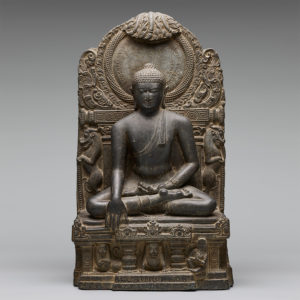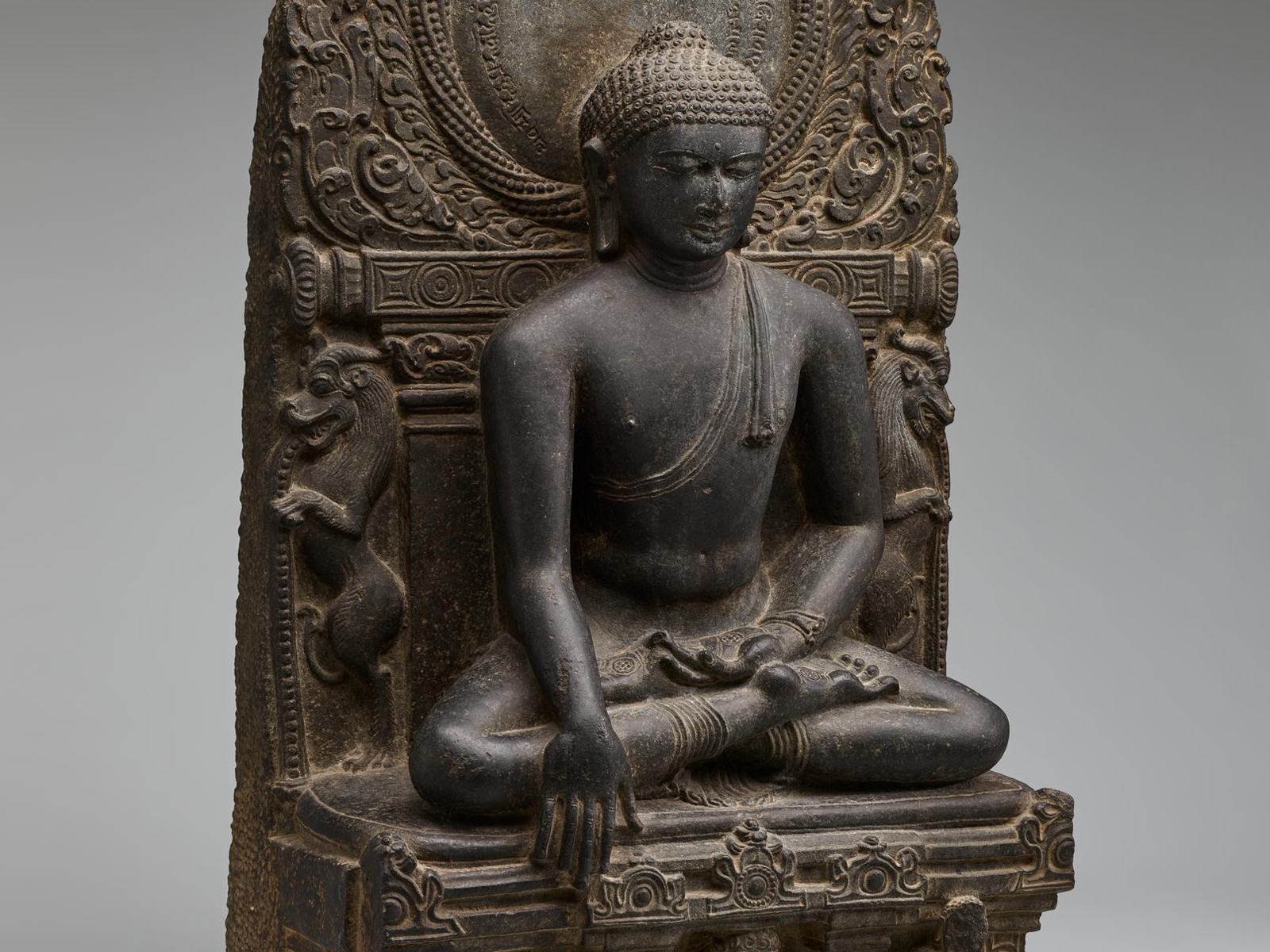This rare 10th-century stone sculpture from India shows us the Buddha on the threshold of achieving enlightenment.

The Buddha triumphing over Mara
850–950
India; probably Kurkihar, Bihar state
Basalt
The Avery Brundage Collection, B60S598
This rare 1,000-year-old stone sculpture depicts the Buddha sitting under the Bodhi tree on the verge of enlightenment. It captures the most important moment in the Buddha’s life and in the Buddhist belief system. Finely carved, it has two important inscriptions, one related to the religious nature of the sculpture and the other to its patron.

After many lifetimes of spiritual and intellectual preparation, the Buddha-to-be neared the achievement of Enlightenment, and thus of buddhahood, as he sat meditating under a tree. The demon Mara, an embodiment of death, violence, and uncontrolled passions, approached at the head of a monstrous army, intending to put a stop to the Enlightenment. Mara and the Buddha-to-be repeatedly challenged each other’s power and past accomplishments. Finally, the Buddha-to-be said,
‘Mara, who is witness to your having given donations?’ Said Mara, ‘All these,’ and he stretched out his hand in the direction of his army. Then Mara said, ‘Who is witness to your having given donations?’ The Buddha-to-be replied, ‘I have no animate witnesses present. However, the great 700-fold donation I gave in my immediately previous existence will be testified to by the solid earth.’ And drawing forth his right hand from beneath his priestly robe, he stretched it out towards the mighty earth. And the mighty earth thundered, ‘I bear you witness’ with a hundred thousand roars. And the followers of Mara fled away in all directions. (Adapted from Henry Clark Warren’s 1896 translation of an ancient Buddhist text.)
Soon, having overcome the negative forces represented by Mara, the Buddha-to-be attained full Enlightenment and became a Buddha.
Here we see elements that tell us we’re in the presence of the Buddha as he was on the threshold of achieving enlightenment. Above his head are branches of heart-shaped leaves. They indicate the sacred bodhi tree, under which he is said to have attained enlightenment some 2,500 years ago.
His right hand reaches downward to touch the pedestal — symbolizing the ground on which he sat. Buddha images seated with the right hand in this earth-touching gesture memorialize the victory of the Buddha-to-be over the demon Mara, an embodiment of delusion and uncontrolled passions.
The lump on the top of his head is sometimes said to indicate extraordinary wisdom. He is represented in a posture portrayed widely, seated with his legs crossed in a meditative position.
The twisted garland of beads behind the Buddha’s head represents his halo, a symbol of radiance. Around the inside of this halo, incised in low relief, is a standard formulation of a basic Buddhist belief: “The Buddha has explained the cause of all things that arise from a cause. He, the great monk, has also explained their cessation.”
This sculpture was made in northeastern India, very near where the encounter with Mara and the achievement of Enlightenment are said to have occurred. For 2,000 years, a shrine called the Mahabodhi (“Great Enlightenment”) at Bodhgaya has marked the exact location of these great events. This temple is the holiest site in the Buddhist world and is visited by pilgrims from many countries.
The inscription on the base says that the sculpture was donated by the senior monk Prajnaprabha.